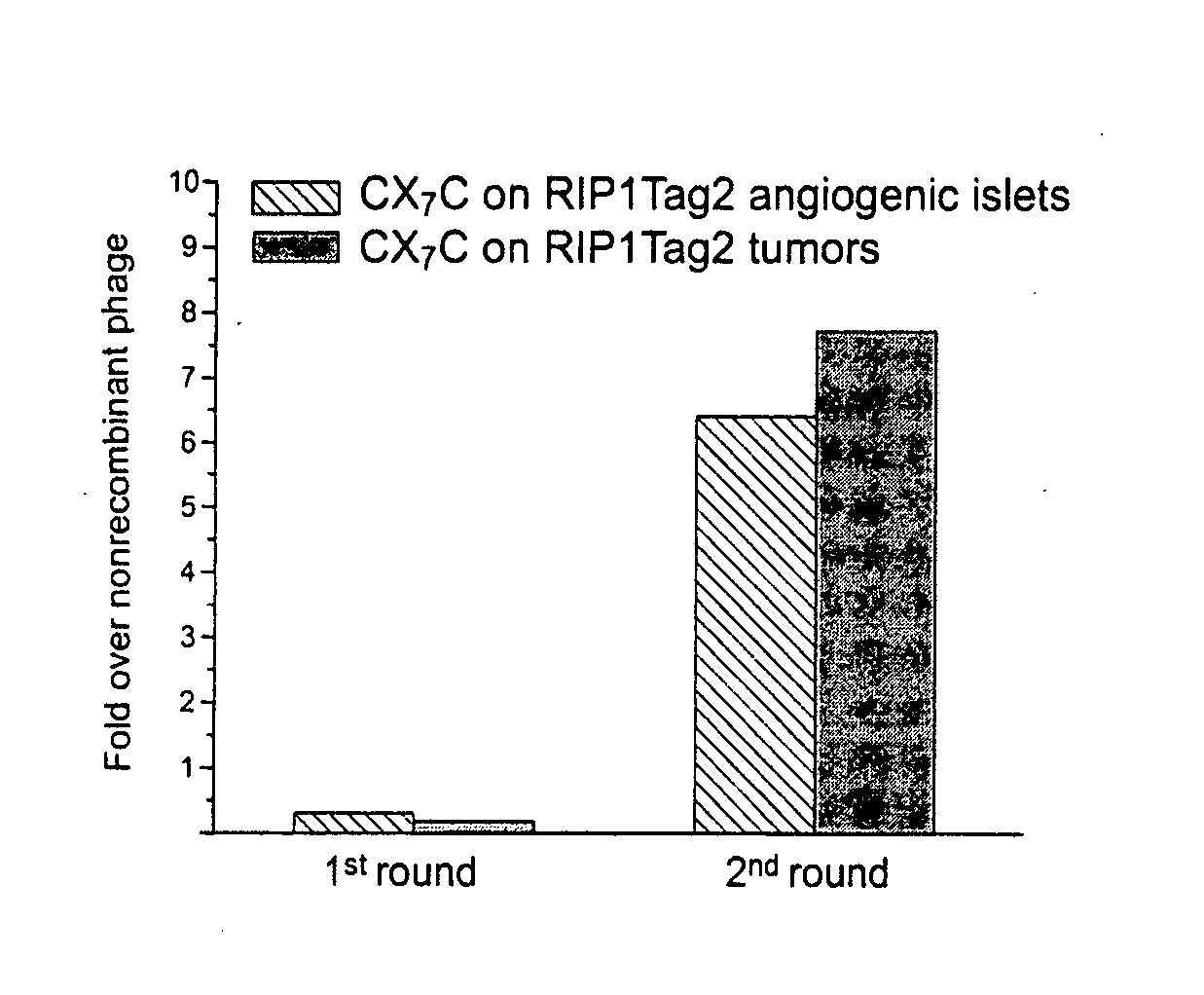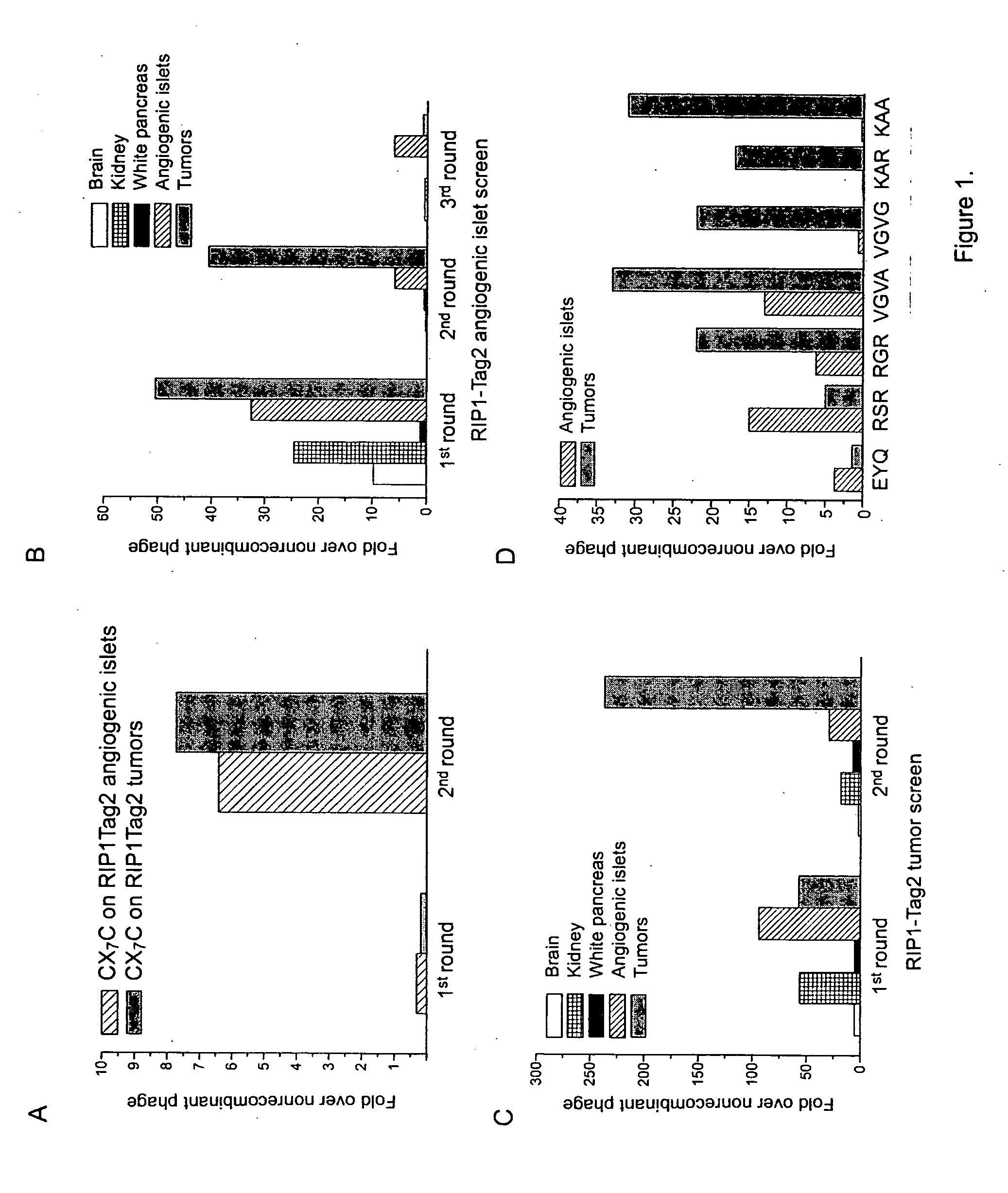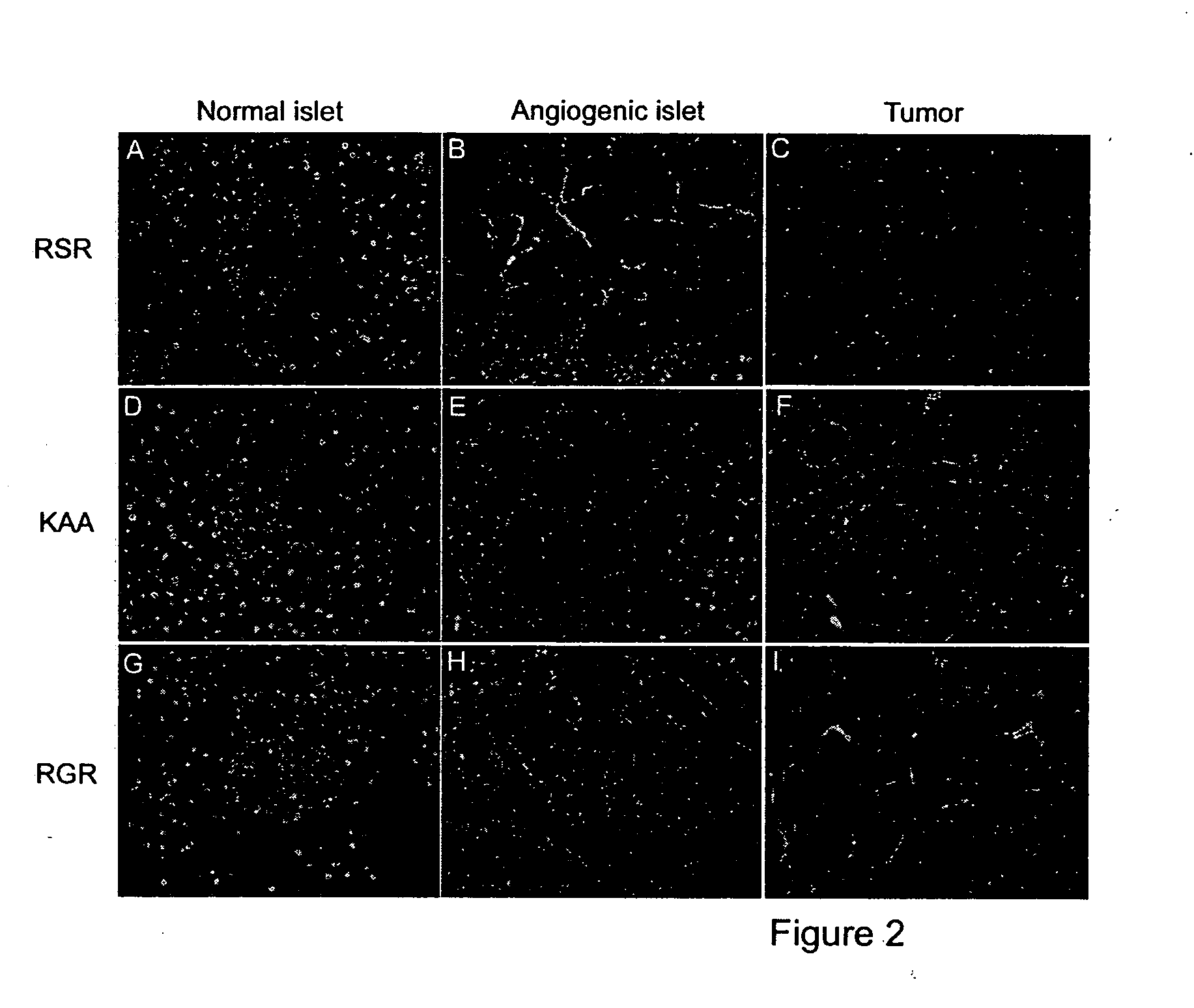Molecules that selectively home to vasculature of premalignant or malignant lesions of the pancreas and other organs
a technology of pancreas and vasculature, applied in the direction of angiogenin, peptide sources, tumor rejection antigen precursors, etc., can solve the problems of scarring and loss of normal tissue, hurdling to advances in preventing and treating cancer, and lack of agents that effectively target cancer or pre-cancerous tissu
- Summary
- Abstract
- Description
- Claims
- Application Information
AI Technical Summary
Benefits of technology
Problems solved by technology
Method used
Image
Examples
example i
Isolation of Stage-Specific Phage
[0123] This example describes the isolation of phage that selectively home to premalignant lesions and malignant tumors.
[0124] To isolate peptides that selectively home to premalignant lesions and malignant tumors, the RIP1-Tag2 mouse model was used. RIP1-Tag2 mice develop multifocal angiogenic islet progenitors and then solid tumors in a stepwise manner, such that at 12 weeks of age, each mouse typically has approximately 50 angiogenic islets and 2-6 small tumors. Using 12 week-old mice, phage that bind to angiogenic islet progenitors and / or tumors in the same mouse were identified.
[0125] The generation of RIP1-Tag2 mice is described, for example, in Hanahan, Nature 315:115-122 (1985). Angiogenic islets were isolated from 8 and 12 week old RIP1-Tag2 mice by collagenase digestion of the excised pancreas, and selected based on their red, hemorrhagic appearance (Parangi et al. Cancer Res. 55: 6071-6076 (1995)). Tumors were microdissected from the ex...
example ii
Tumor Stage-Specific Homing of Fluorescein-Conjugated Peptides In Vivo
[0135] This example describes that selective phage homing was due to the displayed peptide.
[0136] To confirm that selective phage homing was due to the displayed peptide sequences, localization of fluorescein-conjugated peptides after intravenous injection was observed. For this analysis, one peptide from each homing class was selected as follows: CRSRKG (SEQ ID NO:9), referred to as RSR (angiogenic-selective), CKAAKNK (SEQ ID NO:15), referfed to as KAA (tumor-selective) and CRGRRST (SEQ ID NO:5), referred to as RGR (angiogenic- and tumor-homing). Eight week old RIP1-Tag2 mice were used to examine peptide localization during the angiogenic switch, and 12-week old RIP1-Tag2 mice were used to visualize both angiogenic islets and tumors.
[0137] Fluorescein-conjugated peptides corresponding to phage insert sequences were synthesized using an automated peptide synthesizer with standard solid-phase fluorenylmethoxycar...
example iii
Co-Localization of Fluorescein-Conjugated Peptides with Vascular Markers in RIP1-Tag2 Premalignant and Malignant Lesions
[0141] This example describes co-localization of fluorescein-conjugated peptides with vascular markers.
[0142] To confirm that intravenous administration of phage libraries selects for phage carrying peptides that bind to endothelial molecules specific for the target vasculature, tissues were collected following i.v. infusion with the various fluorescein-conjugated peptides, sectioned, and evaluated with endothelial cell markers.
[0143] For immunohistochemistry, frozen slides were pre-incubated with blocking buffer (1×PNB from NEN Biosciences) for one hour, washed several times in 1×PBS and incubated with the primary antibody of interest overnight at 4° C. The cell-specific antibodies used were rat monoclonal anti-mouse CD31 (1:200; BD Pharmingen), rat monoclonal anti-mouse MECA-32 (1:200; BD Pharmingen), rabbit polyclonal anti-mouse NG2 (1:200; Chemicon), and rat...
PUM
| Property | Measurement | Unit |
|---|---|---|
| Length | aaaaa | aaaaa |
| Therapeutic | aaaaa | aaaaa |
| Cytotoxicity | aaaaa | aaaaa |
Abstract
Description
Claims
Application Information
 Login to View More
Login to View More - R&D
- Intellectual Property
- Life Sciences
- Materials
- Tech Scout
- Unparalleled Data Quality
- Higher Quality Content
- 60% Fewer Hallucinations
Browse by: Latest US Patents, China's latest patents, Technical Efficacy Thesaurus, Application Domain, Technology Topic, Popular Technical Reports.
© 2025 PatSnap. All rights reserved.Legal|Privacy policy|Modern Slavery Act Transparency Statement|Sitemap|About US| Contact US: help@patsnap.com



